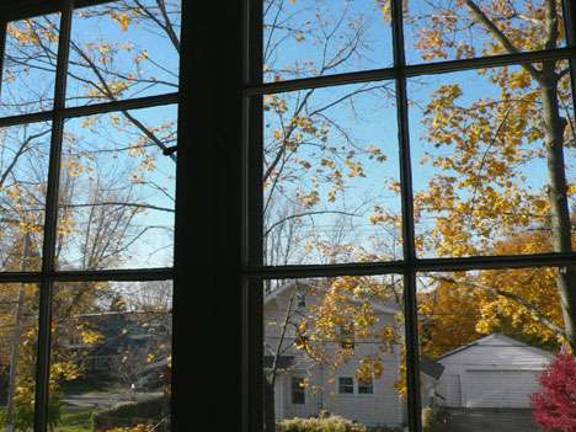Save money as the weather chills

Baby, it's getting cold outside. If you haven't already, conduct an energy assessment to find out where you can save the most, and consider making a larger investment for long-term energy savings.
But there are some simple ways to start saving money and energy now:
Use the sun Open curtains on your south-facing windows during the day to allow sunlight to naturally heat your home, and close them at night to reduce the chill you may feel from cold windows.
Cover drafty windows Use a heavy-duty, clear plastic sheet on a frame or tape clear plastic film to the inside of your window frames during the cold winter months. Make sure the plastic is sealed tightly to the frame to help reduce infiltration.
Install tight-fitting, insulating drapes or shades on windows that feel drafty after weatherizing.
Find out about other window treatments and coverings that can improve energy efficiency.
Adjust the temperature When you are home and awake, set your thermostat as low as is comfortable.
When you are asleep or out of the house, turn your thermostat back 10 to 15 degrees for eight hours and save around 10 percent a year on your heating and cooling bills. A programmable thermostat can make it easy to set back your temperature.
Find out how to operate your thermostat for maximum energy savings..
Find and seal leaks Seal the air leaks around utility cut-throughs for pipes ("plumbing penetrations"), gaps around chimneys and recessed lights in insulated ceilings, and unfinished spaces behind cupboards and closets.
Add caulk or weatherstripping to seal air leaks around leaky doors and windows.
Find out how to select and apply the appropriate caulk.
Maintain your heating systems Schedule service for your heating system.
Find out what maintenance is required to keep your heating system operating efficiently.
Furnaces: Replace your furnace filter once a month or as needed.
Wood- and pellet-burning heaters: Clean the flue vent regularly and clean the inside of the appliance with a wire brush periodically to ensure that your home is heated efficiently.
Reduce heat loss from the fireplace
Keep your fireplace damper closed unless a fire is burning. Keeping the damper open is like keeping a window wide open during the winter; it allows warm air to go right up the chimney.
When you use the fireplace, reduce heat loss by opening dampers in the bottom of the firebox (if provided) or open the nearest window slightly — approximately 1 inch — and close doors leading into the room. Lower the thermostat setting to between 50° and 55°F.
If you never use your fireplace, plug and seal the chimney flue.
If you do use the fireplace, install tempered glass doors and a heat-air exchange system that blows warmed air back into the room.
Check the seal on the fireplace flue damper and make it as snug as possible.
Purchase grates made of C-shaped metal tubes to draw cool room air into the fireplace and circulate warm air back into the room.
Add caulking around the fireplace hearth.
Lower water heating costs Water heating accounts for about 18 percent of the energy consumed in your home. Turn down the temperature of your water heater to the warm setting (120°F). You'll not only save energy, you'll avoid scalding your hands.
Lower holiday lighting costs Use light-emitting diode — or "LED" — holiday light strings to reduce the cost of decorating your home for the winter holidays.
Reverse your ceiling fan Reverse the direction of your ceiling fan: by running the blades in reverse, air collected near the ceiling is circulated back into the room, cutting heating cost as much as 10 percent.
Insulate your pipes Insulate your pipes: the federal government will reimburse you up to 30 percent of the cost. This insulation will save on hot water and reduce the chances of water freezing in your pipes.
Source: Energy Saver (energy.gov), the U.S. Department of Energy's consumer resource on saving energy and using renewable energy technologies at home.